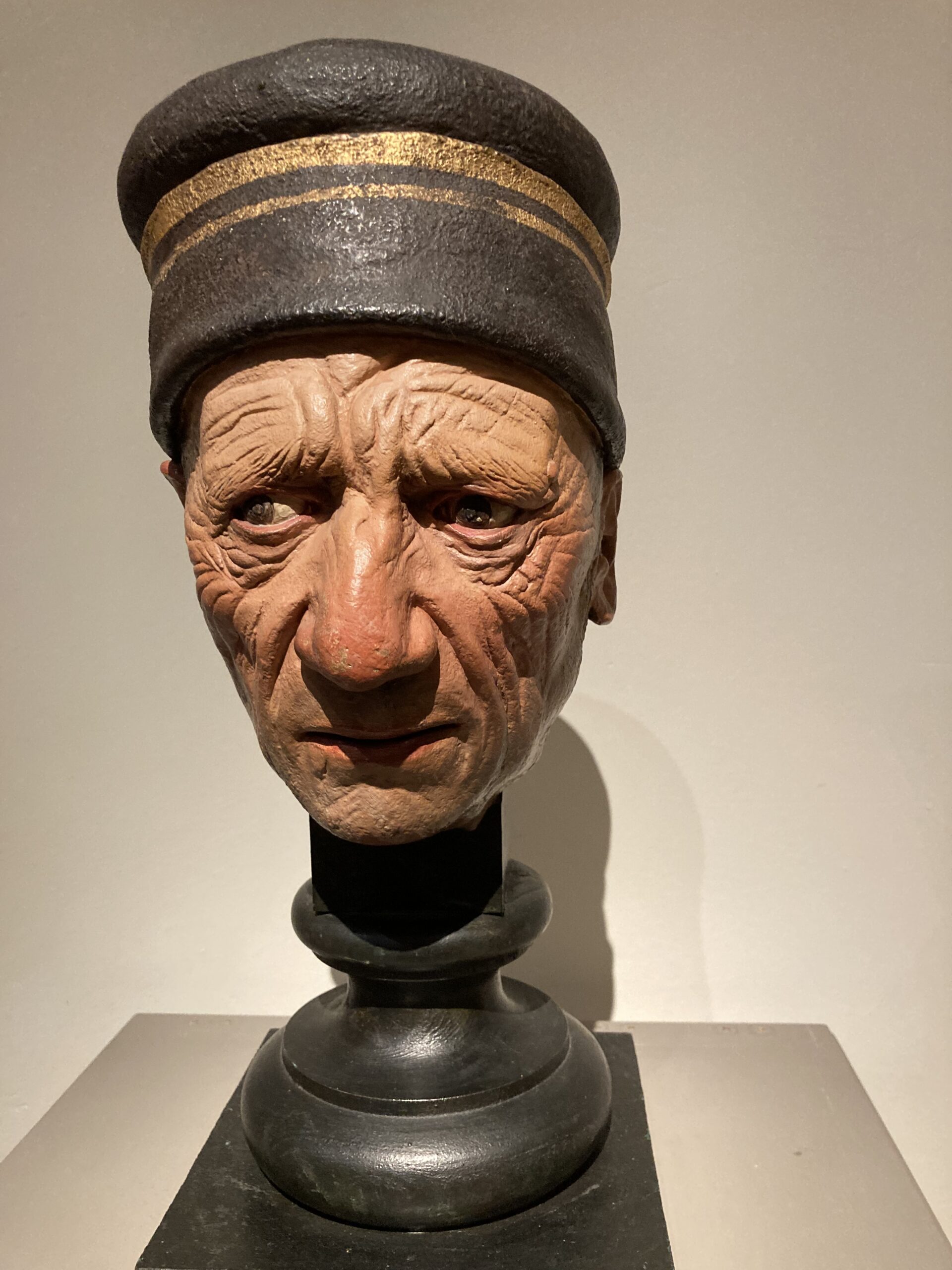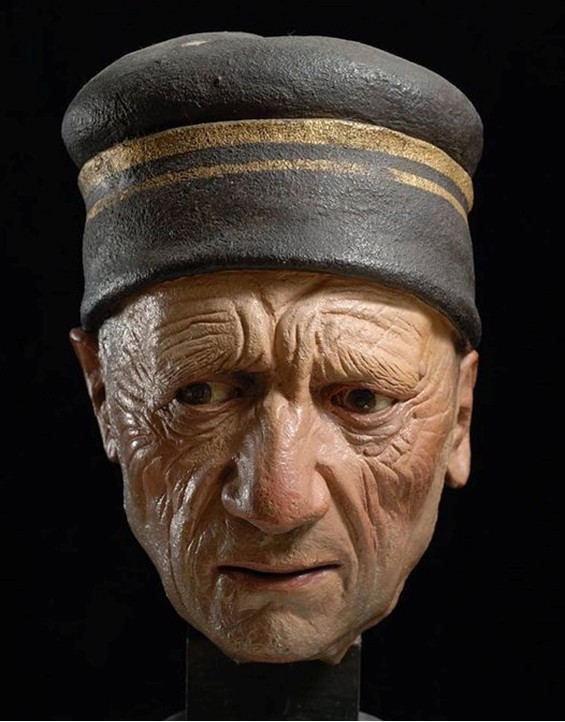
Head of a Man, 1480s, Polychrome Terracotta, Height: 26 cm, Galleria Estense, Modena, Italy – Photo Credit: Amalia Spiliakou, April 2025
Among the many treasures of Renaissance Modena, Guido Mazzoni’s Portrait of an Old Man stands out as a striking testament to the artist’s gift for capturing human presence in all its fragile dignity. Unlike the idealised faces often associated with the period, this work confronts the viewer with unmistakable signs of age, including wrinkles, sagging skin, and weary eyes, rendered with sculptural intensity. It is a portrait that resists flattery, instead offering an unvarnished meditation on mortality and memory, reminding us that true artistry lies not only in beauty but in truth.
Guido Mazzoni (c. 1445–1518), also known as Il Modanino, was an Italian sculptor celebrated for his extraordinary terracotta figures that combined lifelike detail with deep emotional resonance. Born in Modena, he trained in the local artistic traditions before developing a distinctive style that blended Renaissance naturalism with theatrical intensity. His talent for capturing individuality and human vulnerability is especially evident in his devotional groups, such as the famous Lamentation over the Dead Christ in Modena, where each figure is imbued with unique gestures and striking realism.
Mazzoni’s reputation spread beyond his native city, earning him commissions in Ferrara, Naples, and even at the French court of Charles VIII, where he created funerary monuments that secured his international acclaim. Though he worked in an era dominated by marble and bronze, his masterful use of painted terracotta gave his sculptures an immediacy and humanity that resonated deeply with contemporary audiences. Today, he is remembered as a pioneer of Renaissance naturalism, a sculptor who elevated humble clay into a medium of profound psychological and spiritual depth.
Mazzoni’s terracotta portraits hold a special place within Renaissance art, bridging devotional practice and the emerging culture of individual likeness. Unlike the idealised forms of classical revival, his works present faces lined with age, grief, or quiet dignity, revealing a concern for truthful representation rarely achieved in sculpture of the time. These portraits not only embodied the Renaissance fascination with humanism and personal identity but also offered a powerful medium for viewers to confront mortality and faith in profoundly tangible form. Through his clay figures, Mazzoni expanded the role of portraiture from commemoration to intimate encounter, leaving behind works that still speak with raw immediacy across centuries.

Head of a Man, 1480s, Polychrome Terracotta, Height: 26 cm, Galleria Estense, Modena, Italy https://www.facebook.com/groups/203138520642/posts/10168057091855643/
Mazzoni’s Portrait of an Old Man, formally titled Head of a Man, is a strikingly naturalistic polychrome terracotta bust dating to the 1480s and currently housed in Modena’s Galleria Estense. What appears today as a standalone head was likely cut from a larger Passion-group sculpture, either a Lamentation or adoration scene, functioning perhaps as the representation of a donor within a devotional tableau. The life-sized head, richly painted and finely modelled, reveals Mazzoni’s remarkable ability to render individual features, the drooping jawline, deeply incised wrinkles, stippled beard, and even the weathered texture of aged skin, in a way that seems to echo the direct observation, almost like a moulded life cast sculpted into clay. The sitter’s berettone (a type of upper-class hat) further hints at his social status, lending an air of quiet dignity rather than theatrical grandeur.
What makes this terracotta portrait especially compelling is its unvarnished realism. Mazzoni does not smooth away the signs of ageing; instead, he embraces them, allowing each line, sagging plane, and subtle blemish to coexist with a steady, penetrating gaze, a gaze that forges an intimate, psychologically charged connection with the viewer. Smarthistory underscores how the painted surface, though now restored, would have once enhanced the illusion of living flesh, infusing the clay with lifelike presence and emotional resonance. In the Renaissance context, such individuality marked a departure from idealised portrayals. It connected deeply with humanist ideals: the acknowledgement of personal identity, wisdom that comes with age, and the blending of spiritual humility with worldly reality. As part of a devotional ensemble, this head may have invited viewers to see the donor, and by extension themselves, as active participants in spiritual reflection and empathy, all rendered in a medium both accessible and profoundly expressive.
For a PowerPoint Presentation of Guido Mazzoni’s oeuvre, please… Check HERE!
Bibliography: https://smarthistory.org/guido-mazzoni-head-of-a-man/ and https://www.artsupp.com/en/artists/guido-mazzoni/testa-di-vecchio and https://gallerie-estensi.beniculturali.it/blog/longform/guardare-all-anima-delle-opere/